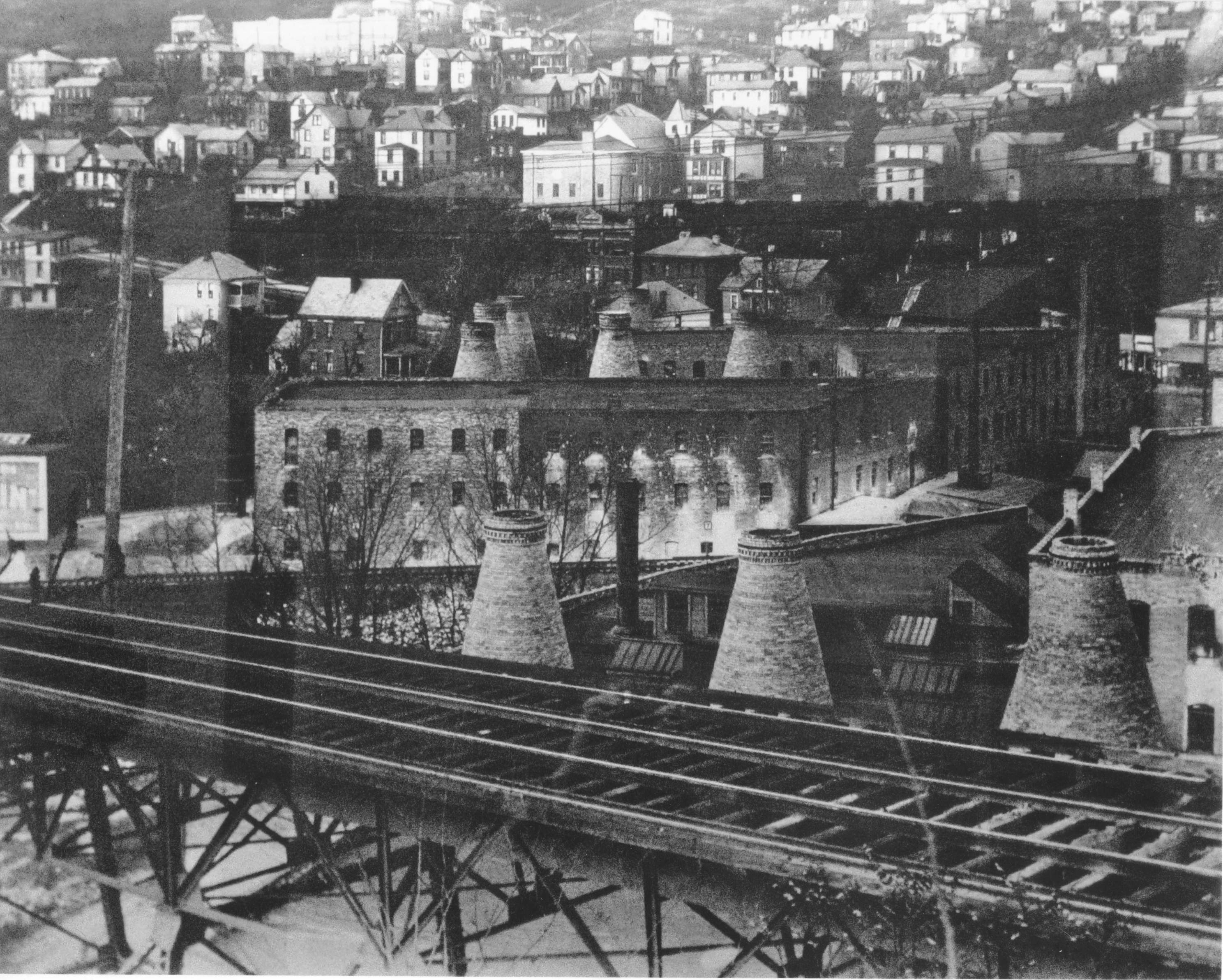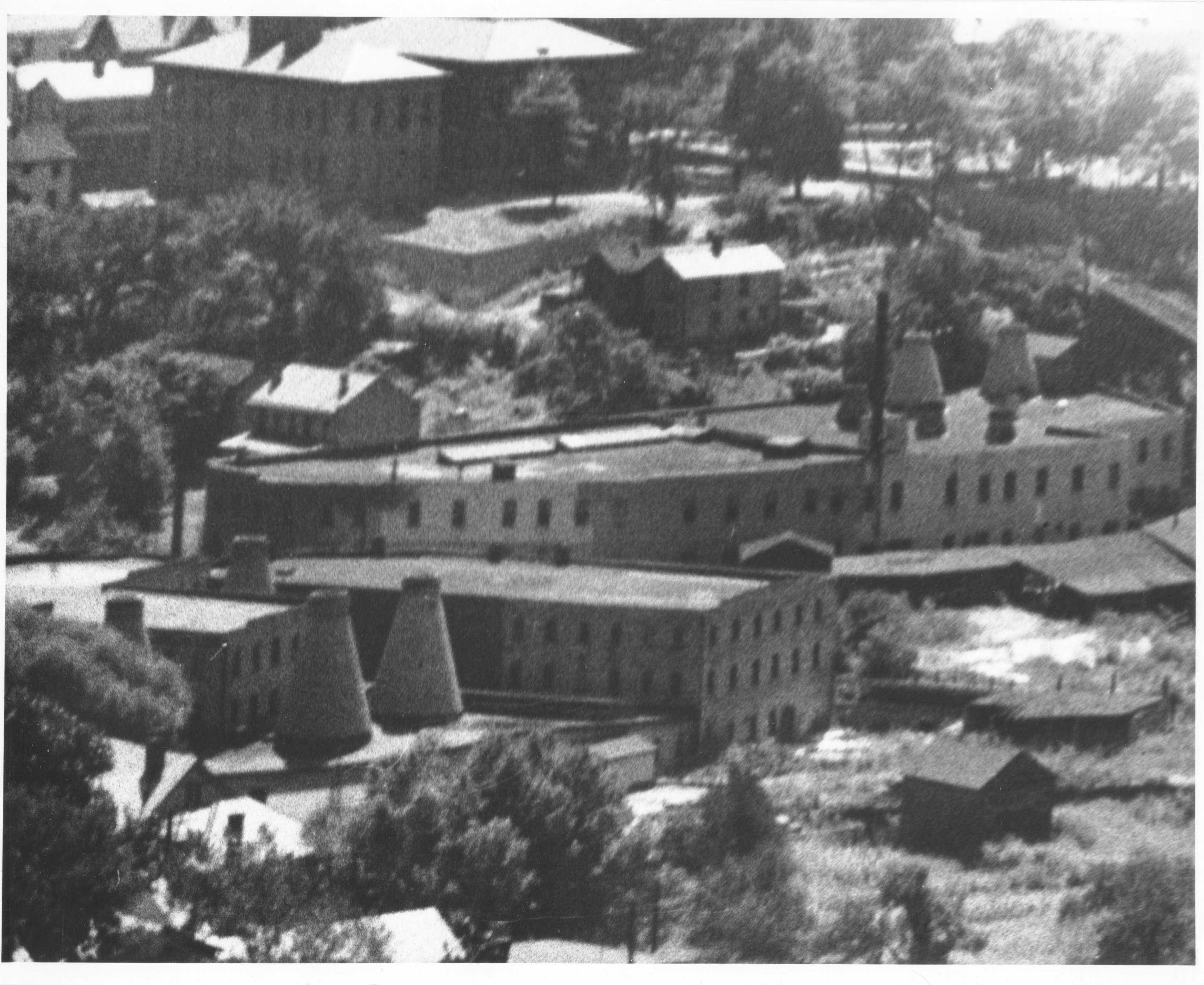 Click here to view larger image
Click here to view larger image
In the forefront of this picture is the trestle.
Its actual names were the "Tripartite bridge to West Eighth Street" or the "Sixth Street Viaduct." The double track bridge was part of the Ohio Valley Scenic Route which was part of the East Liverpool Track and Light trolley system which in turn was part of the Steubenville, East Liverpool and Beaver Valley Traction System.
For more information on the long gone landmark, see Ghost Rails III by Wayne A. Cole. pp 160-161 in particular and the entire book as a whole.
The viaduct was built in 1906 and was used until the early to mid 1930's when bus transportation began taking over the work of moving passengers. The viaduct was gone by 1940.
Beside the viaduct is the Adament Porcelain Pottery. A part of this pottery existed as a working pottery into the very early 1960's. It was at the foot of West Seventh Street. At that time it manufactured electrical insulators. In the upper left portion of the picture you can see Washington School.
Across Eighth street from that pottery are the houses that used to sit up above Eighth Street. Some of those houses may still exist today while others, especially those towards the right side of the picture, were taken when Route 11 was built.
 Click here to view larger image
Click here to view larger image
The Adament Pottery takes up the bulk of the lower half of the picture. There are houses present above the pottery — one at the foot of West Seventh Street; two others to the right and above that house. They would be at the end of Rural Lane.
Above and to the left of those two houses is Sixth Street School. Sixth Street School was interesting in that it had an addition added to it, clearly shown in the picture. The reason for the addition was that Third Street School only went up as high as Fourth grade so additional rooms were needed at Sixth Street for the two 5-8 grade rooms as well as the 1-4 grade room.
To the far right of the picture about midline you can get a glimpse of the Sixth Street viaduct.
© 2007-2012 East Liverpool Historical Society